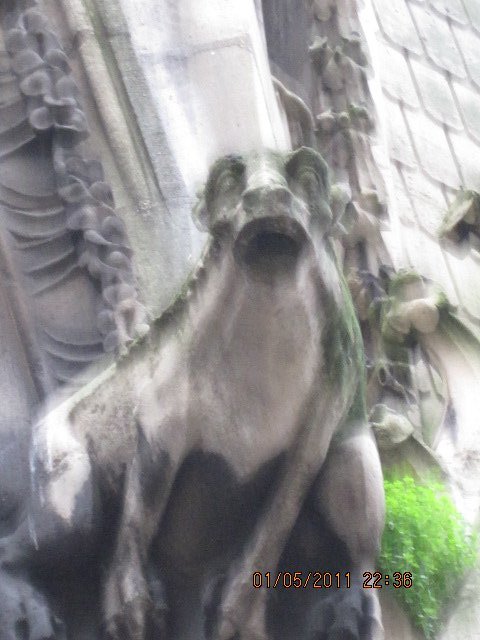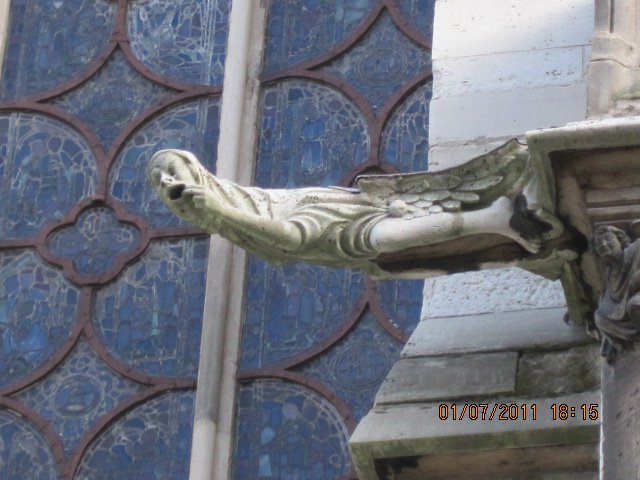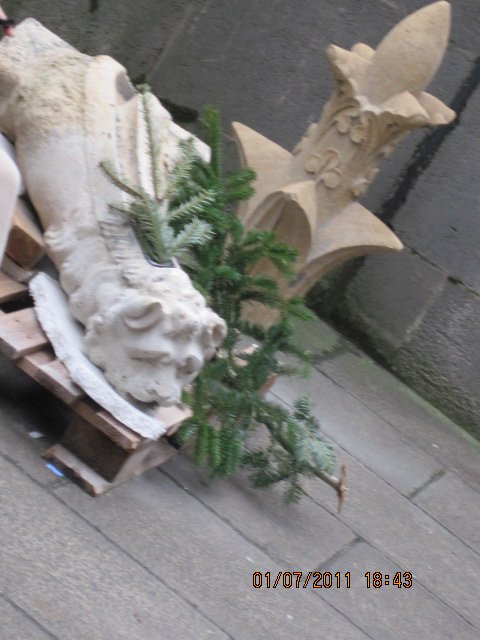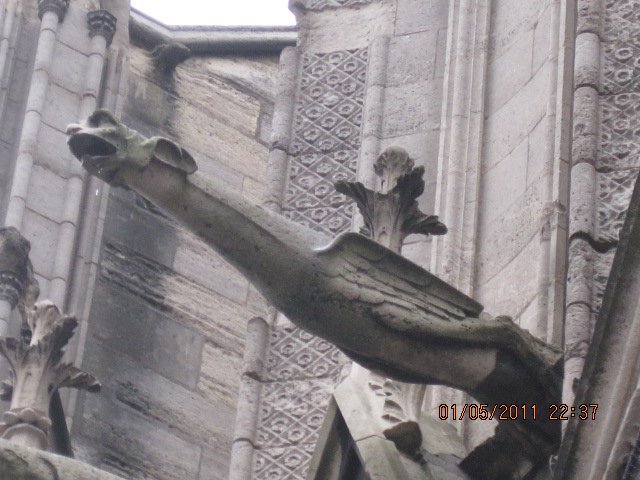Cover image: Notre-Dame de Paris gargoyle. All photos in this post are (c) A Scholarly Skater, 2011-2024. All rights reserved.
Instead of sharing my none-too-interesting new paper, I am going to write about one of the things I have been very excited to write about for a long time… gargoyles! You are probably a little disappointed in me right now, because I told you in my last post that my nerdiness has limitations but am now getting very excited over gargoyles. If this is the case, please just trust me a little longer, because I promise it is going to be awesome.
As I remember from Medieval Art and Architecture in school, gargoyles are odd little creatures carved out of stone and typically found on the exteriors of medieval churches. No one is exactly sure what they symbolize. We do know that gargoyles serve an important function in medieval architecture – they act as drain spouts. However, the reasons why medieval architects made their drain spouts in the shape of little monsters is still a mystery. One theory I remember is that they are something called apotropaic devices, which means that they protect against evil. This theory has merit, because there are a lot of apotropaic devices, or at least good candidates for them, in medieval art at large. Another theory says that they are meant to be demons of hell that scare passers-by into going inside the church and praying for their souls. This also has merit because medieval churches were regularly adorned with relief carvings of the Last Judgment above their entryways for this very reason. There is a third theory that they are meant to mark the border between the profane outside world and the sacred interior of the church, and I am sure other ideas exist that I haven’t heard or just forgot.

The main problem with all of these theories is the fact that gargoyle-like images crop up elsewhere in medieval art, such as in manuscripts. (Technically, the term gargoyle is only applicable to the drain spout version, and anything else is a grotesque. However, it’s common to use the two words interchangeably when being colloquial.) Most theories that fit the beings on the churches, like the demon theory, suddenly make no sense when you consider the beings in the manuscripts. Other theories, like the one in which the gargoyles are apotropaic devices, are still somewhat valid but much less convincing when the manuscript monsters are included. To the best of my knowledge, there is still not any one theory that is generally accepted.

In this post there are some photos of gargoyles on churches. The first two are from Notre Dame de Paris, and the last two are from the Sainte-Chapelle, also in Paris. The fourth little guy (below) had been removed for some reason during restoration and was lying on the ground. In other words, he had fallen and couldn’t get up. 😉 I also enjoy the fact that the third one looks kind of like a dementor. All of them are from my trip to Paris in 2011. Notice the open mouths for water drainage. As you can see, gargoyles can have a variety of different looks, even on the same church or in the same city. Part of this is because not all of them were designed at the same time. Nineteenth-century restorers were notorious for taking some pretty wild liberties when restoring Gothic churches. In fact, a very prominent one (Viollet le Duc) altered a good half of the interior of Notre Dame. Restorers frequently added their own gargoyles. So you have to be careful when talking about medieval gargoyles that you don’t accidentally base your theory on the nineteenth-century ones. Some of them are very different from the originals. I drive past an American church with gargoyles every day, and even though I enjoy them quite a bit, I know that the nineteenth-century architect who designed them knew about as much about their original meaning as I do — barely anything at all. The stereotypical crouching gargoyle who usually has bat-like wings is only from the nineteenth century, I’m sorry to say. Beyond that, it can be harder to tell, but in my Paris photo album I labelled the first photo “medieval gargoyle” and the second photo “nineteenth-century gargoyle”, so I must have known something then that I don’t now.

Are you starting to understand why I am fascinated by this little monsters? They are ancient, slightly creepy but also kind of adorable, and a big unsolved mystery. I will continue to explore gargoyles in my next post with some examples of grotesques in manuscripts and other medieval art. In the meantime, I should give a shout-out to Professor Keane, my college adviser and Medieval Art and Architecture professor, because I learned most of what is written here from her class. I just hope I got it all right and will pass inspection if she ever sees this.
In other news, WordPress recommended this for me based on the content of my post. It is hilarious and may convert you to loving gargoyles if my post already didn’t. 😉 But you know I’m going to research each and every one of those gargoyles in the near future.



